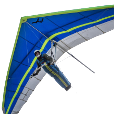@batsy here are detailed instructions for drawing the spring using the 2D method you reference.
Set osnaps to endpoint, midpoint, and nearest.
Draw a rectangle of appropriate proportions, make a copy below it and draw the diagonals and vertical centerline as noted.
Create an ellipse then and offset to it to yield:
Create a spline with the Fit method by first click at 1, then type T (tangency) and click at 2, followed by a click at 3 and 4 then type T and click at 5.
Using splinedit e (edite vertex) m (move) [Enter] (to advance to the second Control Vertex) move it up or down to adjust the radius of curvature at the start of the spline. Still in the edit spline mode type x [enter] 3 times to exit edit spline. Note, once you have moved a CV with editspline you can now more easily move CVs with using editspline.
Select the spline and move the CVs to get the desired shape. Be sure to keep the 2nd CV and the next to the last CV on the vertical line of the rectangle. This will ensure that spline slope at the start and end are vertical. Adjust the middle CV so that the spline is just below the bottom of the rectangle.
Create an offset to the spline with the same value used for the ellipse.
MIrror the 2 curves about a the rectangle horizontal middle axis then copy the top 2 curves to the top rectangle.
Copy or array the curves of the lower box.
Edit with trim as needed.
Note, the aspect ratio of the original rectangle will determine the level of spring compression.


